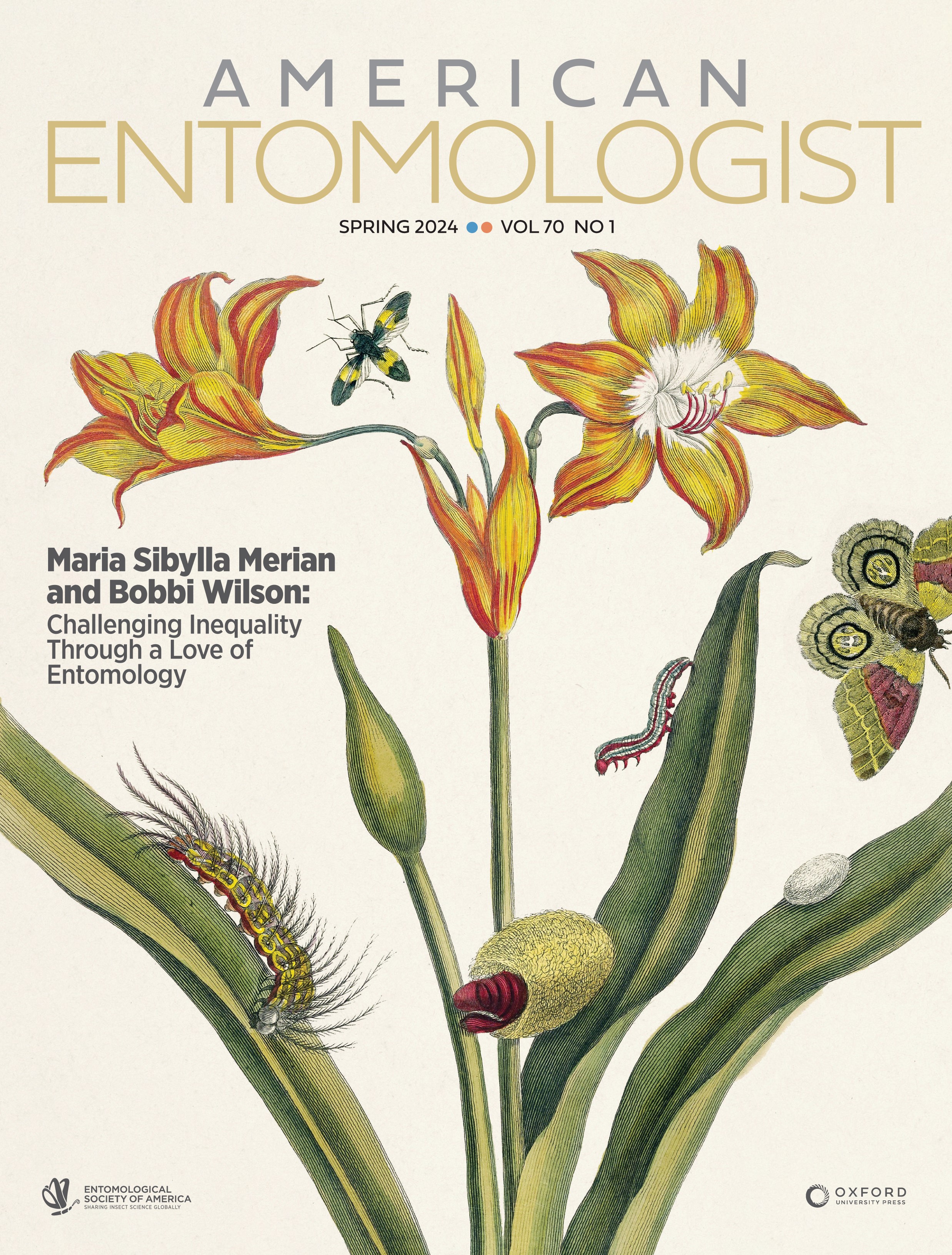American Entomologist

Student Stadia Articles:
The Student Affairs Committee is responsible for providing content for the Student Stadia column (formerly known as Student Life) in each quarterly American Entomologist issue.
Entomology Today

The Student Affairs Committee started a series on the Entomology Today blog entitled, "SAC Series." The blog posts are published on a monthly basis.
View Entomology Today blog posts
Student Publishing Opportunities
- Environmental Entomology’s Undergraduate Research Showcase – Research papers with undergraduate first authors can be published in this special collection for free or at reduced author fees. Articles may be smaller scale than typical research papers (e.g., one year of field data), but still must be scientifically sound and should be innovative. All papers are free to read. To have your research considered, submit the proposed title, author list, and abstract to pubs@entsoc.org.
- American Entomologist’s Student Stadia – American Entomologist welcomes papers on a wide range of topics, including personal reflections and musings on how entomology is reflected in literature and culture. In particular, the Student Stadia column is entirely student written. Handled by the Student Affairs Committee, these submissions reflect the experiences of current entomology students. To be considered, submit an article preview (250 words max) with your topic idea and the goals of your article. Maximum article length is 800 words. No author fees.
- Journal of Insect Science Student Debates – ESA’s Annual Meeting often includes a student debate. These lively, cross-examination-style debates offer students an opportunity to develop their critical thinking and communication skills. Following the debates, the students publish a peer-reviewed summary in the Journal of Insect Science. No author fees.
- Journal of Integrated Pest Management (JIPM) Pest and Natural Enemy Profiles – Many students have discovered that the in-depth species analyses they prepare as students can be transitioned into JIPM’s pest and natural enemy profiles. While this opportunity is not limited to students, it is great way for students to begin building a publication record using the research they already performed for school.
- Annals of the Entomological Society of America Review Papers – Ph.D. students often do extensive literature reviews as part of their dissertation preparation. Some take advantage of this deep, domain-specific knowledge by writing a review for Annals. If your area of research has not been sufficiently examined or summarized in a review article in the last 10-years, submit a proposal to Annals. No author fees.
- Entomology Today – Students interested in science communication have had success writing for ESA’s blog, Entomology Today. These are typically summaries of recently published research or discussions of issues important to entomology students. Contact jrominiecki@entsoc.org if interested.
Reviewing and Editing Roles
Bachelors’ and masters’ students are unlikely to be called on to serve as reviewers or editors, but Ph.D. students are sometimes invited to review. If you’re early in your academic journey, we recommend you speak to your professors. Some advisors will co-review manuscripts with students, offering them a chance to gain exposure to the process and understand what makes a good review.
ESA’s editors-in-chief and subject editors are usually seasoned professionals with significant research and publishing experience. For those interested in an editor role, the first stop is often an associate editor position. Associate editors are essentially high-powered reviewers. They are subject matter experts, often called to review on short notice when a paper receives contradictory reviewers or when an editor is having a particularly difficult time locating a reviewer.
Educational Resources
- New author workshop this year: ESA’s editors will be hosting a workshop at the annual meeting with tips on how to write a good paper and what to expect from the peer review process. Participants may be asked to share some of their work, which will be critiqued via breakout groups. If interested, contact pubs@entsoc.org.
- Peer-Review workshops – The Journal of Economic Entomology editors have begun organizing reviewer workshops at ESA’s Branch and Annual Meetings. These sessions outline the peer process and offer tips on how to perform a constructive and comprehensive review.
- Webinars – ESA’s webinar archive offers lessons on insect photography, science communication, and publishing, including How to Efficiently and Effectively Review a Journal Manuscript. More resources are expected to be added in the future.
Student Debate Articles:
ESA Student Debates took place each year at ESA's Annual Meeting through 2023, and afterwards, the debate materials appear in the Journal of Insect Science. Prior to 2018, these articles appeared in American Entomologist.
For questions or comments related to ESA’s publications, contact us at pubs@entsoc.org.
